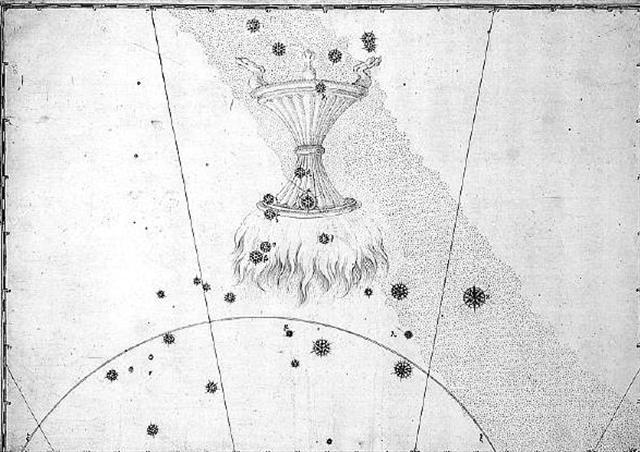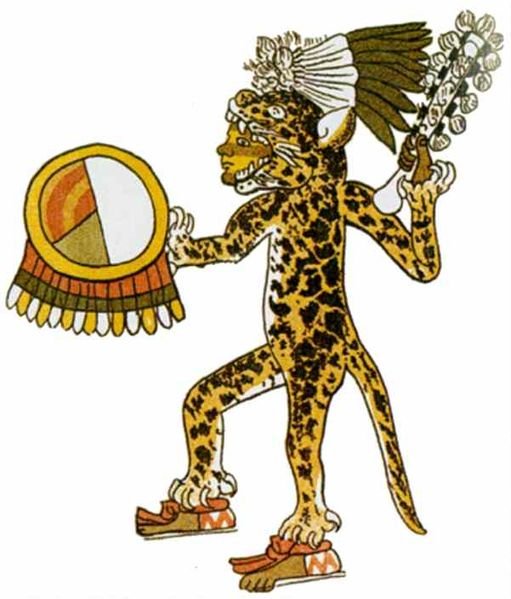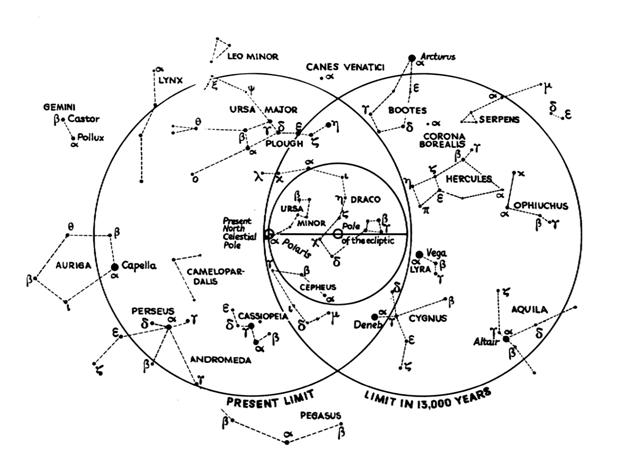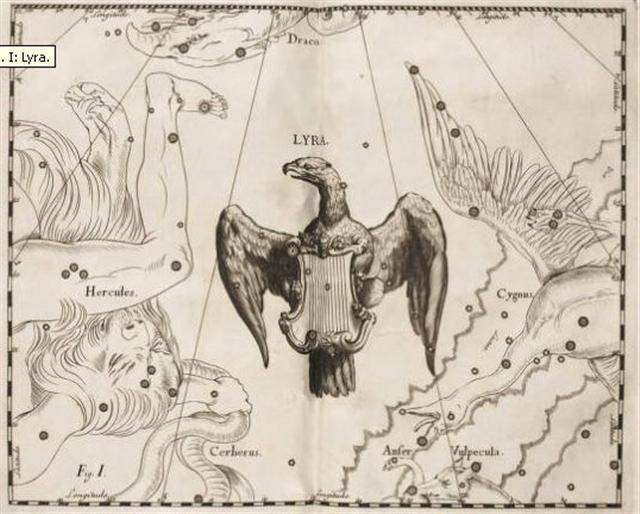512. The precession had shifted these
27 days on the plain (at a solstice the Sun
evidently
took a rest because he did not appear to move,
neither climbing nor descending). And
since
Roman times the Sun had pushed his cardinal points earlier in the year, as
observed against the background of the fixed stars.
|
'June 10 (161) |
'June 11 |
12 |
'June 24 (175) |
12 |
'July 7 (188) |
|
26 |
|
CLOSE TO THE SUN: |
|
Dec 11 |
12 (346) |
13 (LUCIA) |
|
'Nov 14 |
15 |
16 (320) |
 |
 |
 |
|
ko te
maro - ko te tagata
|
kua
hua te tagata |
ko te
tagata |
|
Cb3-7 (448 = 392 + 56) |
Cb3-8 |
Cb3-9 (58 = 2 * 29) |
|
Al
Shaula-17
ALWAID (Mother Camels) =
β
Draconis, MAASYM (Wrist)
=
λ
Herculis
(265.1),
SHAULA (Sting) =
λ
Scorpii
(265.3),
KUMA =
ν
Draconis
(265.6),
σ
Arae (265.9)
HAMAL (α ARIETIS)
|
RAS ALHAGUE = α Ophiuchi
(266.1),
SARGAS = θ Scorpii (266.3),
μ Ophiuchi, π Arae
(266.5),
NAN HAE (Southern Sea) =
ξ Serpentis
(266.6), AL
DHĪLI (The Wolf) = ω
Draconis,
ι Herculis (266.7) |
λ Arae (267.1),
GIRTAB (Seizer) = κ
Scorpii,
ο Serpentis (267.6),
DSIBAN (Wolf Pair) = ψ
Draconis
(267.9) |
 |
|
CLOSE TO THE FULL MOON: |
|
June 11 (162)
MINTAKA (Belt) =
δ
Orionis,
υ
Orionis (82.4),
χ
Aurigae (82.5),
ε
Columbae (82.6)
*41.0 = *82.4 - *41.4 |
12 (528 = 365 + 163 = 2
* 264)
Al Hak'ah-3 (Brand) /
Mrigashīrsha-5 (Stag's
Head) /
Turtle Head-20 (Monkey)
/
Mas-tab-ba-tur-tur
(Little Twins)
ARNEB =
α
Leporis, Crab Nebula =
M1 Tauri
(83.0,
φ¹
Orionis (83.1),
HEKA = λ Orionis, Orion
Nebula =
M42
(83.2),
φ²
Orionis (83.6),
ALNILAM (String of
Pearls) =
ε
Orionis
(83.7) |
13 (164)
Three Stars-21 (Gibbon)
/
Shur-narkabti-sha-shūtū-6
(Star in the Bull
towards the south)
/
ANA-IVA-9 (Pillar of
exit)
HEAVENLY GATE =
ζ
Tauri,
ν
Columbae (84.0),
ω
Orionis (84.2),
ALNITAK (Girdle) =
ζ
Orionis,
PHAKT (Phaet) =
α
Columbae
(84.7) |
|
'May 15 (365 + 135 =
500) |
16 (136) |
17 |
|
DAY 82 |
83 |
84 = 265 - 181 |
At the time of rongorongo the Full
Moon was at Mintaka (the first of the 3 stars in the
center of Orion) in June 11 (162), whereas in
Roman times the Full Moon would have been at Mintaka
in day number 162 - 27 = 135 (= 500 - 365), viz. in
'May 15. So this change due to the precession
was equal in length to the duration of the month of
Jupiter. And also to the time the Explorers spent on the beach
of Oromanga (corresponding to the eastern
part of the Bay of
Anakena):

There was a correspondence between
the features down on the ground on Easter Island and
what could be observed up in the sky above at the stars. This
time-space of correspondences was a beautiful whole, a cosmos.
As above so below.
"Poike is the turning point of the
journey. After heading west, the explorers survey
the northern shore as a residence for the king.
Well-known places along this shore, such as Mahatua,
Taharoa, and 'the bay of turtles' are rejected. Not
until the dream soul reaches the 'reddish sky' (rangi
meamea), which is today called Ovahe, does
the land become suitable for settlement.
The main requirements are level land
and a safe place for the canoes to land (maara,
HM:465).
Maara.
Flat coastal area usable as landing stage. Vanaga.
Protected by the heights of Peke Tau O
Hiti, today called Cerro Puharoa, and Hau Epa (see
NA I:277), the final goal of the dream voyage turns
out to be the best landing site and the finest beach
on Easter Island. Oromanga is the eastern part of
the beach of Anakena; the bay of Moria One is the
western part." (The Eighth Land, p. 38)

The
date He Anakena 23 at the moe (dreaming)
bird in Cb4-11 was located in the 23rd day of the Bay of
Anakena, corresponding to where in Roman times Father Light (Jus Piter)
had rested, at the beginning of his month.
|
 |
 |
|
moe |
Cb4-11 |
Moe.
To sleep, to lie at full length,
to dream, to brood, to place, to cohabit; moe atu,
to leave off, to desist; moe atu ra, to
adjourn, to postpone; moe hakahepo, to talk
in the deep; moe aherepo, somnambulist,
sleepwalker; moe hakataha, to sleep on
the side; moe no, to oversleep, concubinage;
moe tahae, to be a light sleeper; moe
tahaga, a sleeper; moe vaeahatu,
moe hakaroa, to sleep sprawling; rava moe,
to sleep sound; ariga moe ki raro, to
lie flat on the ground; tae moe, bachelor;
hakamoe, to brood, to fold the wings; to
reserve, to lay up; to struggle. P Pau.: moe,
sleep. Mgv.: moe, sleep, to lie down, coitus,
to shut the eyes. Mq.: moe, to sleep, to lie
down; haámoe, to set down on the ground. Ta.:
moe, to sleep, to lie down. Moea raruga,
lying flat. Moeaivi, thin. Mq.: ivi,
haáivi, id. Ta.: ivi, id. Moega,
mat. Pau.: moehega, bed. Mgv.: moega,
a sleeping mat. Mq.: moena, moeka,
mat, floor cloth, bed. Ta.: moea, bed.
Moemata, to sleep with the eyes open; mea
moemata, phantom. Moemoea, a dream,
vision; tikeahaga moemoea, apparition
by night. T Mgv., Mq., Ta.: moemoea, dream.
Churchill. Mgv. Moemoe, to steal, to purloin
at a food distribution. Mq.: moemoe, to
seize, to grasp. Churchill. Ta.: 1. Moemoe,
ambush. Ha.: moemoe, id. 2. Moemoe,
Phyllanthus simplex. To.: mohemohe, a tree.
Churchill. Mq.: Moehu, exiled, banished,
prisoner of war. Ma.: morehu, a survivor.
Churchill.
I have been puzzled why the moe
glyph type visualizing a tired old bird seems to be located not at the end
of the day but at its beginning:
|
... The word moe
(which Metoro
often used at moe
glyphs) together with
the visual impressions
from the glyph type
makes it easy to draw
the conclusion that the
intention could be to
illustrate the end of a
'tired old' season.
However, another
explanation is probably
more correct - viz. that
moe marks the
time when next season is
making itself noticed by
light in the east
(although the celestial
body expected still has
not risen). When the
light announces the
arrival of the moon it
is called koata
and this seems to have
been a reason for great
joy (koa).
...when the new moon
appeared women assembled
and bewailed those who
had died since the last
one, uttering the
following lament: 'Alas!
O moon! Thou has
returned to life, but
our departed beloved
ones have not. Thou has
bathed in the waiora
a Tane, and had thy
life renewed, but there
is no fount to restore
life to our departed
ones. Alas'... |
The end is close to a new beginning,
and a new moon (●)
is dark, and in Manuscript E the voyage of the dream
soul (te kuhane o hau maka) took place before
the explorers went to Easter Island. At Alnitak (the
Girdle, the 3rd star in Tau-toru) a new
half-year was beginning. The male Belt (Mintaka) had
been succeeded by the female Girdle.
... When this tremendous task had
been accomplished Atea took a
third husband, Fa'a-hotu,
Make Fruitful. Then occurred a
curious event. Whether Atea
had wearied of bringing forth
offspring we are not told, but
certain it is that Atea and
her husband Fa'a-hotu
exchanged sexes. Then the eyes of
Atea glanced down at those of
his wife Hotu and they begat
Ru. It was this Ru who
explored the whole earth and divided
it into north, south, east, and west
...
In Roman times
this was in 'May 17 (137) and at the time of the Bull
(64 + 16 = 80 days earlier than the
time of rongorongo) the Full Moon had been at
Alnitak in day 164 (June 13) - 64 - 16 = 84
(corresponding to the Julian equinox in 'March 25).
From Alnitak
to right ascension night *108 (no star listed by me)
there were 108 - 84 = 24 glyphs:
|
CLOSE TO THE SUN: |
|
Jan 3 |
4 |
5 (370) |
6 |
7 |
|
'Dec 7 |
8 |
9 |
10 |
11 (345) |
 |
 |
 |
 |
 |
|
manu
mau kai - rere ki te kai
- ka kake ki te kai -
hakavari te gao o te
manu - *
ausgestrichen:
manu rere ki te hau tea |
kiore
henua |
|
Cb4-8 (392 + 79 = 471) |
Cb4-9 (80) |
Cb4-10 (420 + 53) |
Cb4-11 (58 + 24) |
Cb4-12 |
|
Al Na'ām-18 (Ostriches)
/
Uttara Ashadha-21
(Elephant tusk, small
bed)
NUNKI = σ Sagittarii
(288.4), ζ Cor. Austr.
(288.5),
MANUBRIUM = ο Sagittarii
(288.8), ζ Aquilae
(288.9)
*247.0 = *288.4 - *41.4 |
19h (289.2)
λ
Aquilae (Ant.) (289.1),
γ
Cor. Austr (289.3),
τ
Sagittarii (289.4),
ι
Lyrae (289.5),
δ
Cor.
Austr. (289.8)
*248.0 = *289.4 - *41.4 |
Al Baldah-19 (City)
AL BALDAH
= π Sagittarii,
ALPHEKKA (Dish)
MERIDIANA = α Cor.
Austr.
(290.1), β Cor. Austr.
(290.2) |
ALADFAR = η Lyrae
(291.1),
NODUS II = δ Draconis
(291.5), ψ Sagittarii
(291.6), τ Draconis
(291.7), θ Lyrae (291.8) |
ω Aquilae (292.1), ρ
Sagittarii (292.6), υ
Sagittarii (292.7) |
|
... This [σ
Sagittarii] has been
identified with Nunki
of the Euphratean
Tablet of the Thirty
Stars, the Star of
the Proclamation of the
Sea, this Sea
being the quarter
occupied by Aquarius,
Capricornus, Delphinus,
Pisces, and Pisces
Australis. It is the
same space in the sky
that Aratos designated
as Water ... |
|
CLOSE TO THE FULL MOON: |
|
July 4 (185)
ω Gemini (105.4),
ALZIRR (Button) = ξ
Gemini
(105.7),
MULIPHEIN (Oaths) = γ
Canis Majoris
(105.8),
MEKBUDA (Contracted) = ζ
Gemini
(105.9)
*64.0 = *105.4 - *41.4 |
5
7h (106.5)
no star listed (106) |
6
WEZEN
(Weight) =
δ
Canis Majoris
(107.1),
τ
Gemini (107.7),
δ
Monocerotis (107.9) |
HE ANAKENA 23
(204 = 188 - 16)
(E:26)
7 (365 + 188 = 553)
no star listed (108) |
8
λ Gemini (109.4),
WASAT
(Middle) = δ Gemini
(109.8)
*68.0 = *109.4 - *41.4 |
|
'June 7 |
8 |
9 (525 = 365 + 160) |
10 (161) |
11 |
|
DAY 105 |
106 |
107 |
108 |
109 |
'June 10 (161)
was at the Bay of Anakena, where they
could (in Roman times) have observed the return
to visibility of such stars
which had been at the Sun 16
days earlier. *108 - *16 = *92,
and this place was also at the
Bay of Anakena, viz. in He
Anakena 4:
|
CLOSE TO THE
SUN: |
|
Dec 18 |
19 |
20 (354 = 12 *
29½) |
|
'Nov 21 |
22 |
23 (327 = 300 +
54) |
 |
 |
 |
|
manu rere |
tagata -
hanau
hia |
kiore - henua |
|
Hia.
How many? Ka
hia? Which
one? Te hia?
(Teach
Yourself Maori) |
|
Cb3-13 (454) |
Cb3-14 (63 = 273
- 210) |
Cb3-15 |
|
Cat's Eye =
NGC6543 Draconis
(272.2),
ζ
Serpentis
(272.4),
τ
Ophiuchi (272.9)
*231.0 = *272.4
- *41.4 |
Winnowing
Basket-7
(Leopard)
18h (273.4)
NASH (Point) =
γ
Sagittarii
(273.7),
θ
Arae (273.8) |
ZHŌNGSHĀN = ο
Herculis
(274.0), π
Pavonis (274.6) |
 |
|
CLOSE TO THE
FULL MOON: |
|
June 17 (168)
Ardra-6 (The
Moist One) /
ANA-VARU-8
(Pillar to sit
by)
χ¹
Orionis,
ξ
Aurigae (88.1),
BETELGEUZE =
α
Orionis
(88.3),
ξ
Columbae (88.5),
σ
Columbae (88.7)
ZUBEN ELGENUBI
(α Librae) |
18
η
Leporis (89.0),
PRAJA-PĀTI (Lord
of Created
Beings) =
δ
Aurigae,
MENKALINAN
(Shoulder of the
Rein-holder) =
β
Aurigae,
MAHASHIM (Wrist)
=
θ
Aurigae,
and
γ
Columbae (89.3),
π
Aurigae (89.4),
η
Columbae (89.7)
*48.0 = *89.4 -
*41.4 |
19
μ Orionis
(90.3), χ²
Orionis (90.5) |
|
APRIL 14 (104 =
78 + 26 = 88 +
16) |
15 (*25 = *89 -
*64 = *41 - *16) |
16 |
|
DAY 88 (= 104 -
16) |
89 |
90 |
|
CLOSE TO THE
SUN: |
|
SOLSTICE |
Dec 22 |
23 (357) |
24 |
 |
 |
 |
 |
|
Cb3-16 (457) |
Cb3-17 (66 = 82
- 16) |
Cb3-18 |
Cb3-19 |
|
henua kua hoi |
kua ka te ahi
o te henua |
o te henua
kua hoi |
ko te henua
kua vero te ahi |
|
Ahi.
Fire; he-tutu
i te ahi to
light a fire.
Ahiahi =
evening;
ahiahi-ata,
the last moments
of light before
nightfall.
Vanaga. 1.
Candle, stove,
fire (vahi);
ahi hakapura,
match; ahi
hakagaiei,
firebrand waved
as a night
signal. P Mgv.:
ahi,
fire, flame.
Mq.: ahi,
fire, match,
percussion cap.
Ta.: ahi,
fire, percussion
cap, wick,
stove. 2. To be
night;
agatahi ahi atu,
day before
yesterday. 3.
Pau.: ahi,
sandalwood. Ta.:
ahi, id.
Mq.: auahi,
a variety of
breadfruit. Sa.:
asi,
sandalwood. Ha.:
ili-ahi,
id. Ahiahi,
afternoon,
night; kai
ahiahi,
supper. P Pau.,
Mgv., Mq., Ta.:
ahiahi,
afternoon,
evening.
Ahipipi (ahi
1 - pipi
2) a spark, to
flash.
Churchill.
Hoki.
To
return, to
go back, to come back; ka hoki ki rá, go back there! ana
oho koe ki Hiva,
e hoki mai ki
nei, if you
go to the
mainland, do
come back here
again. Vanaga.
1. Also, what;
ki ra hoki,
precisely there;
pei ra hoki,
similitude,
likeness; pei
ra hoki ta matou,
usage. P Pau.:
hokihoki,
often. Mgv.:
hoki, also,
and, likewise.
Mq.: hoi,
surely. Ta.:
hoi, also,
likewise. 2. To
return, to turn
back, to draw
back, to give
back, to tack;
mau e hoki
mai, to
lend; hoki
hakahou, to
carry back;
hoki amuri,
to retrograde;
hakahoki,
to bring back,
to send back, to
carry back, to
restore, to
renew, to
revoke, to
remove, to
dismiss, to pay,
to pardon, to
compress;
hakahokia,
given up;
hakahokihaga,
obligation. P
Pau.:
hokihoki, to
persist, to
insist;
fakahoki, to
give back. Mgv.:
hoki, to
return, to
retrace one's
steps; oki,
to return, to
come back. Ta.:
hoi, to
return, to come
back. Ta.:
mahoi, the
essence or soul
of a god.
Churchill. |
|
ι Pavonis
(275.1),
POLIS = μ
Sagittarii
(275.9)
MENKAR (α Ceti) |
η Sagittarii
(276.9) |
Purva Ashadha-20
(Winnowing
Basket) |
|
KAUS MEDIUS = δ
Sagittarii,
κ Lyrae (277.5),
TUNG HAE
(Heavenly
Eastern Sea) = η
Serpentis
(277.7),
SHAOU PIH (Minor
Minister) = φ
Draconis
(277.8),
KWEI SHE = χ
Draconis
(277.9) |
φ
Oct. (278.1),
KAUS AUSTRALIS =
ε
Sagittarii
(278.3),
ξ
Pavonis (278.4),
AL ATHFAR (The
Talons of the
Falling Eagle) =
μ
Lyrae
(278.6)
*237 = *278.4 -
*41.4 |
|
... As has
already been
mentioned, the
Delphians
worshipped
Dionysus once a
year as the
new-born child,
Liknites,
'the Child in
the Harvest
Basket', which
was a
shovel-shaped
basket of rush
and osier used
as a harvest
basket, a
cradle, a
manger, and a
winnowing-fan
for tossing the
grain up into
the air against
the wind, to
separate it from
the chaff. The
worship of the
Divine Child was
established in
Minoan Crete,
its most famous
early home in
Europe. In 1903,
on the site of
the temple of
Dictaean Zeues -
the Zeus who was
yearly born in
Rhea's cave at
Dicte near
Cnossos, where
Pythagoras spent
'thrice nine
hallowed days'
[27] of his
initiation - was
found a Greek
hymn which seems
to preserve the
original Minoan
formula in which
the
gypsum-powdered,
sword-dancing
Curetes, or
tutors, saluted
the Child at his
birthday feast.
In it he is
hailed as 'the
Cronian one' who
comes yearly to
Dicte mounted on
a sow and
escorted by a
spirit-throng,
and begged for
peace and plenty
as a reward for
their joyful
leaps ...
 |
|
CLOSE TO THE
FULL MOON: |
|
June 20 (171)
6h (91.3)
ν
Orionis (91.4),
θ
Columbae (91.5),
π
Columbae (91.6)
*50.0 = *91.4 -
*41.4 |
HE ANAKENA
4 (185)
SOLSTICE
ξ Orionis (92.5) |
22
Al Han'ah-4
(Brand) /
Maru-sha-pu-u-mash-mashu-7
(Front of the
Mouth of the
Twins)
TEJAT PRIOR =
η
Gemini
(93.4),
γ
Monocerotis
(93.5),
κ
Aurigae (93.6),
κ
Columbae (93.8)
*52.0 = *93.4 -
*41.4 |
23
FURUD
= ζ Canis
Majoris
(94.9) |
|
APRIL 17 (107 =
171 - 64) |
18 |
19 |
20 |
|
DAY 91 (= 107 -
16) |
92 |
93 |
94 |
|
CLOSE TO THE
SUN: |
|
Dec 25 |
26 (360) |
27 |
28 |
29 |
|
SOLSTICE |
°Dec 22
(356) |
23 (*277) |
CHRISTMAS
EVE |
25 |
|
'Nov 28 |
29 (360 - 27
= 333) |
30 (320 +
14) |
'Dec 1 |
2 (*256 = 16
* 16) |
|
"Oct 14 |
15 |
16 (320 =
357 - 27) |
17 |
18 (*242 = 2
* 121) |
 |
 |
 |
 |
 |
|
kiore -
henua |
manu rere
i te
taketake |
te henua
- mau i te
taketake |
manu rere |
kiore -
henua |
|
Cb3-20 (461) |
Cb3-21 |
Cb3-22 (71) |
Cb4-1 (392 +
72 = 464) |
Cb4-2 |
|
... The
specific
epithet
taketake
is Māori for
long
established,
ancient, or
original ... |
|
KAUS
BOREALIS = λ
Sagittarii
(279.3) |
ν Pavonis
(280.4), κ
Cor. Austr.
(280.9)
*239.0 =
*280.4 -
*41.4 |
Abhijit-22
(Victorious)
θ
Cor. Austr.
(281.0),
VEGA = α
Lyrae
(281.8) |
no star
listed (282) |
ζ
Pavonis
(283.4),
λ
Cor. Austr.
(283.6),
DOUBLE
DOUBLE =
ε
Lyrae
(283.7),
ζ
Lyrae
(283.8)
*242.0 =
*283.4 -
*41.4 |

 |
|
CLOSE TO THE
FULL MOON: |
|
DAY OF ST JOHN
Well-22
(Tapir) /
Arkū-sha-pu-u-mash-mashu-8
(Back of
the Mouth of
the Twins)
δ
Columbae
(95.2),
TEJAT
POSTERIOR =
μ
Gemini,
MIRZAM (The
Roarer) =
β
Canis
Majoris
(95.4),
CANOPUS
(Canopy) = α
Carinae
(95.6),
ε
Monocerotis
(95.7),
ψ1
Aurigae
(95.9)
*54.0 = *95.4
- *41.4 |
June
25
no star
listed (96) |
26 (6 * 29½)
β
Monocerotis,
ν Gemini
(97.0) |
27
no star
listed (98) |
28
ν Puppis
(99.2), ψ3
Aurigae
(99.4), ψ2
Aurigae
(99.5)
*58.0 = *99.4
- *41.4
GEMMA (α
Cor. Bor.) |

... The
Pythagoreans
make
Phaeton
fall into
Eridanus,
burning part
of its
water, and
glowing
still at the
time when
the
Argonauts
passed by.
Ovid stated
that since
the fall the
Nile hides
its sources.
Rigveda
9.73.3 says
that the
Great Varuna
has hidden
the ocean.
The
Mahabharata
tells in its
own style
why the
'heavenly
Ganga' had
to be
brought
down. At the
end of the
Golden Age (Krita
Yuga) a
class of
Asura
who had
fought
against the
'gods' hid
themselves
in the ocean
where the
gods could
not reach
them, and
planned to
overthrow
the
government.
So the gods
implored
Agastya
(Canopus,
alpha
Carinae =
Eridu) for
help. The
great Rishi
did as he
was bidden,
drank up the
water of the
ocean, and
thus laid
bare the
enemies, who
were then
slain by the
gods. But
now, there
was no ocean
anymore!
Implored by
the gods to
fill the sea
again, the
Holy One
replied:
'That water
in sooth
hath been
digested by
me. Some
other
expedient,
therefore,
must be
thought of
by you, if
ye desire to
make
endeavour to
fill the
ocean
...
...
Canopy
... covering
over a
throne, etc.
XIV (Wycl.).
Late ME.
canope,
canape
- medL.
canopeum
baldacchino,
for L.
cōnōpēum,
-eum,
-ium
net over a
bed,
pavilion -
Gr.
kōnōpeîon
Egyptian bed
with
mosquito
curtains, f.
kōnōps
gnat,
mosquito
... |
|
... In other
words, the
ancient
Druidic
religion
based on the
oak-cult
will be
swept away
by
Christianity
and the door
- the god
Llyr - will
languish
forgotten in
the Castle
of
Arianrhod,
the
Corona
Borealis.
This helps
us to
understand
the
relationship
at Rome of
Janus and
the White
Goddess
Cardea who
is ... the
Goddess of
Hinges who
came to Rome
from Alba
Longa. She
was the
hinge on
which the
year swung -
the ancient
Latin, not
the Etruscan
year - and
her
importance
as such is
recorded in
the Latin
adjective
cardinalis
- as we say
in English
'of cardinal
importance -
which was
also applied
to the four
main winds;
for winds
were
considered
as under the
sole
direction of
the Great
Goddess
until
Classical
times
... |
|
APRIL
21 (111) |
22 |
23 (177 - 64) |
24 |
25 (115 →
Mercury) |
|
DAY 95 |
96 |
97 |
98 |
99 (= 115 -
16) |
We should notice
that at the time of the Bull and
in day 82 + 183 = 265 (equinox) the Full
Moon was at the Pillar of Exit (α
Columbae) and at that
time Hamal
culminated.

|





























